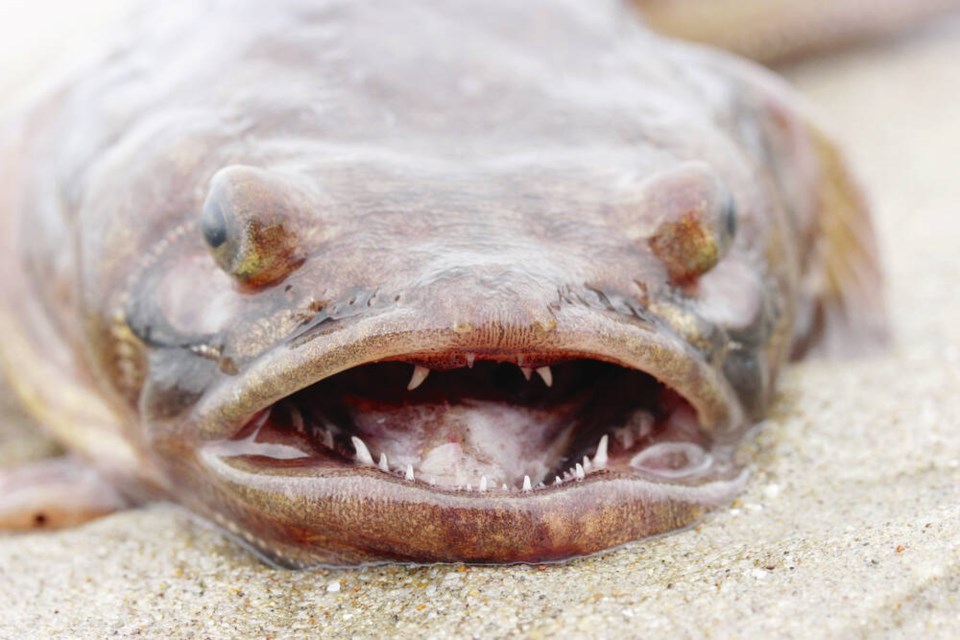Forget the Whidbey Island rumbles. Forget the drone of freighters anchored in the straits. Forget street cleaners, distant traffic, or the snap-crackle-pop of salt-sprayed power lines.
If you’re walking near a beach that has loose rocks, you may be hearing the siren call of the plainfin midshipman fish.
If you’re fortunate to live within the sound of the waves in, for example, Brentwood Bay, Ladysmith Inlet, White Rock’s Crescent Beach, or any other beach with the right combination of sand and rock, you may be familiar with this fish’s night-time vocalizations. They may have interrupted your conversations. They may have woken you up. They may be why you shut your windows at night.
For years, houseboat residents in Sausalito, California, complained about a droning hum from San Francisco Bay on summer nights. Theories explaining the sound included sewage pumps, military experiments and submarines.
But researchers found the ruckus was caused by sex-starved male plainfin midshipman fish.
Each spring, Porichthys notatus males emerge from the depths of the eastern Pacific Ocean to breed in the intertidal zone of our beaches. They storm the beaches at low tide and wedge themselves under rocks, where they excavate their nests. Once finished, the bachelors dig in and hum to attract mates.
The plainfin midshipman is a species of toadfish. The fish have bulbous, big-lipped heads, can grow as long as 38 cm (15 inches), and resemble giant tadpoles or legless toads with long snake-like tails.
A male midshipman hoping to get lucky produces its calls by rapidly contracting its drumming muscles on its air-filled swim bladders.
A beachful of humming males can sound like a swarm of motorboats, a foghorn, or even a B.C. Ferries whistle — the whistle the captain or first officer on the bridge warns passengers about just before it blasts. The fish version of the ship’s whistle is less deafening but lasts longer. The male midshipman can sustain a hum for minutes at a time.
The fish’s vocal repertoire includes grunts, short bursts of sound that may repeat every second or half-second. The fish’s growls also repeat but with longer, varying gaps between.
The plainfin midshipman is one of more than 1,000 species of fish known to make sound that we humans can detect with the help of hydrophones.
Whether by moving their bones, grinding their teeth, releasing air bubbles or vibrating their swim bladder, fish vocalize to communicate information about food, territory or reproduction.
Recently, University of Victoria researchers added three other species to the list of “singing” or sound-producing fish. When the researchers tested new passive acoustic tools that non-intrusively record fish sounds in the wild, they found that the quillback rockfish, the copper rockfish and lingcod are not the quiet ocean types we had long thought them to be.
And just as all the noise we humans make is making it harder for whales to hear each other and their own sonar under the waves, fish are also struggling to hear over our racket.
Researchers recording fish and dolphin calls in South Carolina’s Charleston Harbor, one of the busiest and fastest-growing container ports on the eastern seaboard, found that human-caused noise effectively drowns out the low-frequency calls of croakers, drums, seatrout and oyster toadfish in the harbour.
In particular, the droning that container ships make occurs within the same range as the fishes’ low-frequency calls, creating an effective sound mask. Although the fish sounds became harder to hear, the researchers found that bottlenose dolphins started shouting over the shipping noise.
Unlike the night-calling midshipman fish found on the B.C. coast, the oyster toadfish of South Carolina is most active vocally during the day, when Charleston Harbour is busiest.
Closer to home, however, researchers also found that human-caused noise in Ladysmith Inlet was able to mask plainfin midshipman humming on the few occasions when the fish’s and human-caused noise occurred at the same time.
You can check out the calls of the plainfin midshipman, quillback rockfish, copper rockfish, lingcod and other sea critters on FishSounds.net, an online portal of sea soundscape created by researchers from Canada, U.S. and Brazil.
>>> To comment on this article, write a letter to the editor: [email protected]



